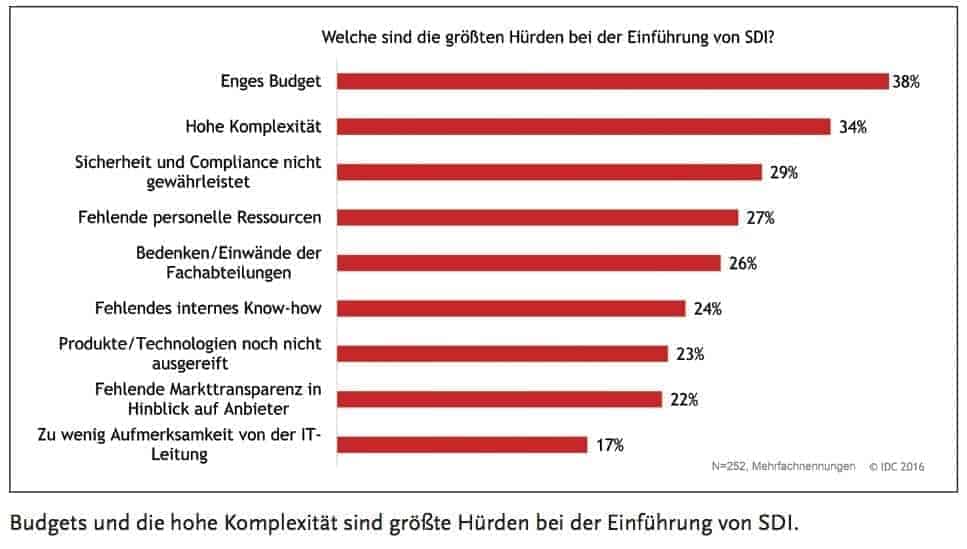Decouple software from hardware
![[shutterstock.com:613086617, rudall30]](https://e3magpmp.greatsolution.dev/wp-content/uploads/2017/08/shutterstock_613086617.jpg)

Data center transformation is in full swing. Companies see Software Defined Infrastructure (SDI) as a solution approach for implementing cloud computing, for lower operational costs and for more efficient operation of information technology.
Although SDI is still in an early phase, companies and organizations are ready to run business-critical applications on it. This is the conclusion of the new IDC study "Software Defined Infrastructure in Germany 2016".
Cloud has top priority
For many companies, making the IT infrastructure more flexible and agile is at the top of the list of requirements. The digital transformation can only be implemented unsatisfactorily with rigid IT resources. More and more business processes on the customer side are taking place online and in real time.
For IT, this means on the one hand providing scalable and agile resources for cloud and web-based services as well as native cloud workloads, and on the other hand supporting and modernizing existing conventional systems and applications in the backend such as databases, transaction and batch processing.
It is therefore not surprising that cloud computing is the most important challenge in the data center over the next twelve months according to 50 percent of the IT managers surveyed.
There are numerous hurdles to overcome when introducing SDI. Lack of budget (38 percent) and high complexity (34 percent) are most frequently cited as challenges.
Architecture issues are at the heart of the complexity discussion. IT managers must be able to understand and comprehend the changes compared to a classic data center topology.
For 18 percent, SDI is an important enabler for the cloud strategy, and in 40 percent of the companies it supports the cloud strategy.
Open source set
For 85 percent, open source plays an important role in SDI. Open source is therefore an important enabler for SDI. The interest in open source is based in many cases on the avoidance of vendor lock-in, cost reduction and the requirement to make API integration or automation as efficient as possible.








